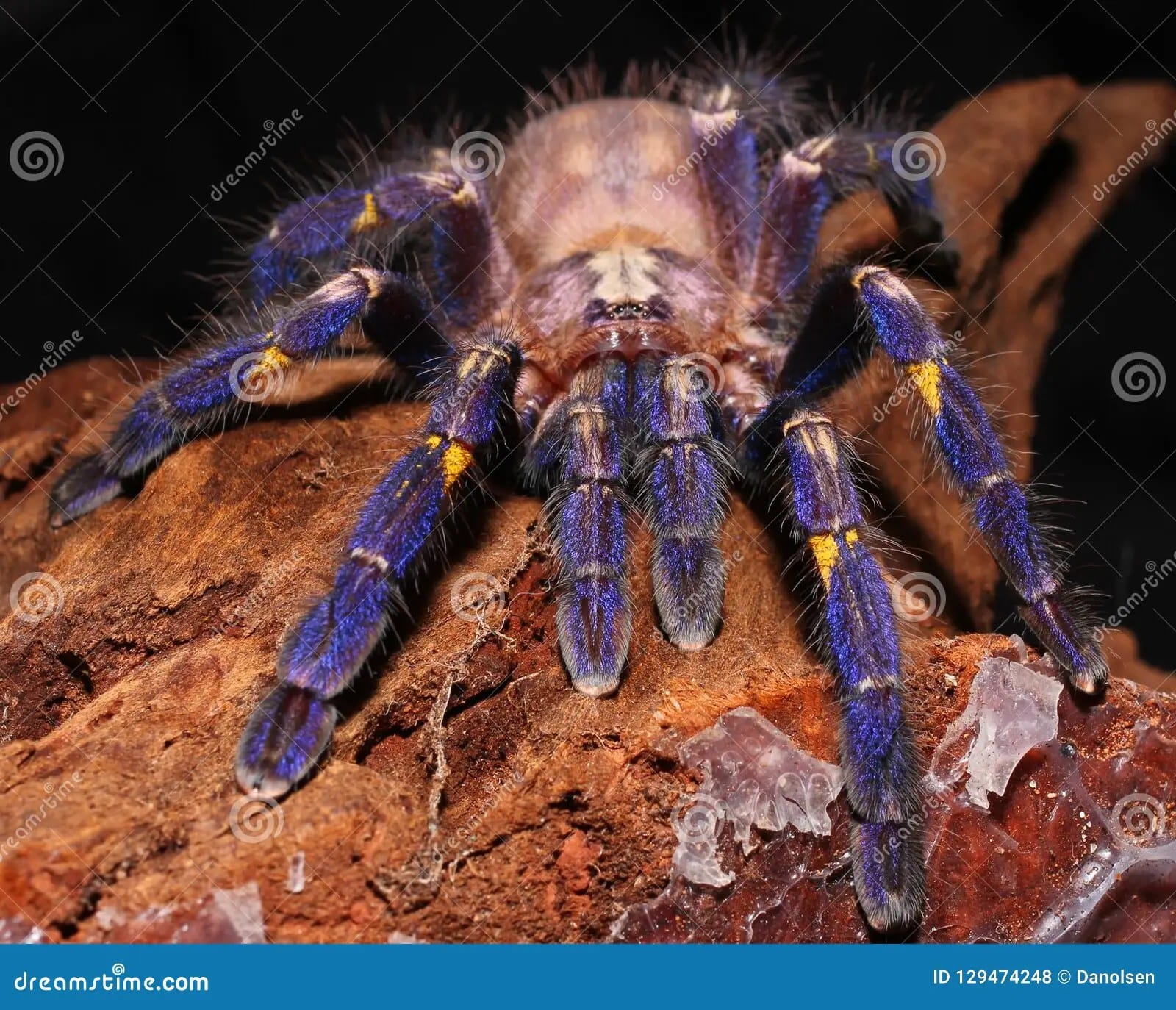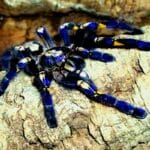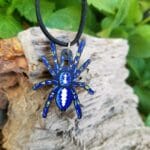Meet the peacock tarantula, a creature straight out of a fantasy film with its electric blue glow and intricate markings. Native to the forests of India, this real-life jewel plays a critical role in its ecosystem, but faces an uncertain future. Let’s delve into the captivating world of the peacock tarantula and discover why this species is in peril.
A Dazzling Rarity: The Enigmatic Blue Tarantula of India
The peacock tarantula (Poecilotheria metallica), also known as the Gooty sapphire, is a sight to behold. Its shimmering, metallic blue coloration is truly mesmerizing, setting it apart from its more drab tarantula relatives. Found only in a small region of deciduous forests in Andhra Pradesh, India, this arboreal spider makes its home in the hollows of tall trees.
But the peacock tarantula’s beauty is both a blessing and a curse. While it captivates with its vibrant hues, this very same allure has made it a prime target for the illegal pet trade. Sadly, this demand, coupled with the destruction of their forest home, has driven the peacock tarantula to the brink of extinction.
Decoding the Defensive Dance: Are Peacock Tarantulas Aggressive?
Contrary to popular belief, peacock tarantulas are not aggressive by nature. Like many creatures, they prefer to avoid confrontation, relying on their incredible speed and agility to evade danger. However, when threatened, they will defend themselves, often employing a series of warnings before resorting to a bite.
If a peacock tarantula feels its space is being invaded, it may raise its front legs, revealing its fangs in a posture known as a “threat display.” This serves as a clear message: back off! Should the threat persist, they may attempt to flee, utilizing their impressive speed to disappear into the shadows of their arboreal domain. Biting is typically a last resort, reserved for situations where they feel their life is in danger.
While no deaths from peacock tarantula bites have been recorded, their venom should not be taken lightly. It is considered medically significant, capable of causing intense pain, muscle cramps, and other systemic reactions. Seeking immediate medical attention following a bite is essential to manage pain and address potential complications.
Unveiling the Truth: How Big Are Peacock Tarantulas?
Peacock tarantulas, despite their grand reputation, are surprisingly petite. Their average leg span ranges from 4 to 6 inches, a far cry from the imposing size of some of their tarantula cousins, like the Goliath birdeater, which can reach a leg span of up to 12 inches.
Interestingly, male peacock tarantulas are generally smaller and more slender than their female counterparts, sporting longer legs and even more vibrant blue coloration. This difference in appearance between sexes, known as sexual dimorphism, is common in many spider species.
A Species on the Precipice: The Fight for Survival
The peacock tarantula’s future hangs in the balance. Classified as “Critically Endangered” by the International Union for Conservation of Nature (IUCN), this species is facing a perfect storm of threats.
- Habitat Loss: The rapid deforestation occurring in their native range is decimating their forest home, leaving them with fewer places to seek refuge and build their intricate webs.
- Illegal Pet Trade: Their striking beauty has made them highly sought-after in the exotic pet trade, fueling a demand that incentivizes poaching and further decimates wild populations.
The survival of the peacock tarantula depends on a multi-pronged approach:
- Protecting Remaining Habitat: Establishing and effectively managing protected areas within their limited range is crucial.
- Combating the Illegal Pet Trade: Stricter enforcement of wildlife trafficking laws and raising awareness about the ethical implications of the exotic pet trade are essential.
- Supporting Responsible Captive Breeding: Promoting ethical and sustainable captive breeding programs can help ensure the species’ survival and potentially contribute to future reintroduction efforts.
The peacock tarantula, with its mesmerizing blue brilliance and critical role in its ecosystem, serves as a powerful reminder of the interconnectedness of life on Earth. By understanding the threats they face and supporting conservation efforts, we can help ensure that this miniature marvel continues to shimmer and shine for generations to come.
Learn More About Other Fascinating Creatures
Have you ever wondered about the magnificent and elusive northern blue tongue skink? This beautiful creature is native to Australia and has a distinctive blue tongue that it uses to deter predators. Also worth mentioning is the northern copperhead snake, which is commonly found in the eastern United States. With its venomous bite, this snake is a force to be reckoned with, so be sure to keep your distance if you see one.
- Unlocking Francis Alexander Shields’ Finance Empire: A Comprehensive Biography - July 12, 2025
- Unveiling Francis Alexander Shields: A Business Legacy - July 12, 2025
- Francis Alexander Shields’ Business Career: A Comprehensive Overview - July 12, 2025















